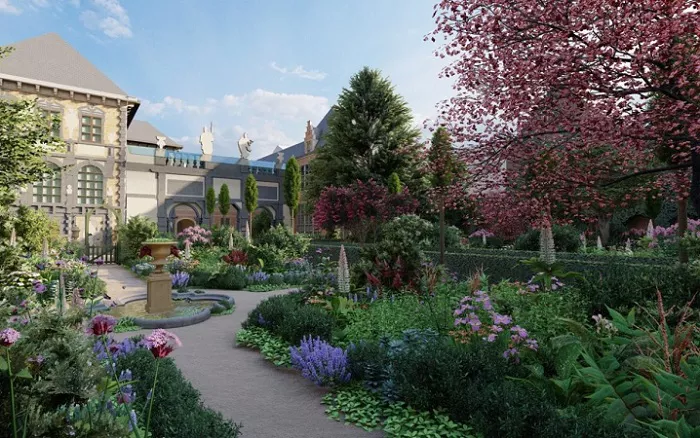Antwerp, Belgium — A historic revival at the Rubenshuis garden has not only brought 17th-century horticultural beauty back to life but also uncovered a forgotten chapter of European tulip history.
Long overshadowed by the well-documented Dutch tulip craze, Antwerp has now emerged as an equally fervent participant in the 1630s tulip mania. This surprising revelation came to light during the meticulous restoration of the garden at the Rubenshuis, the former home of Baroque master Peter Paul Rubens.
Although the Rubenshuis building itself is closed for extensive renovations until at least 2030, its enclosed city garden reopened in summer 2024, restored to its original 17th-century design. Spring 2025 marks the first season the revived tulip beds — rich with historical varieties — have been seen in full bloom.
It was during this ambitious restoration that curator Klara Alen unearthed compelling evidence of a tulip trading frenzy in Antwerp that mirrored the more widely known Dutch tulip mania. Through detailed research into the city’s archival records and botanical history, Alen discovered that tulip bulbs were traded on a thriving black market in Antwerp — often fetching prices higher than gold.
The proximity of these tulip dealings to Rubens’ home has raised intriguing questions. Several prominent figures in the tulip trade, including Rubens’ brewer Hendrick Stockmans, collectors Antonio de Tassis, Gaspar Charles, and Rubens’ own brother-in-law Peter Hannekart, were closely linked to the artist. While there is no definitive evidence that Rubens engaged in tulip trading, Alen’s research shows that he had a known fondness for the flowers. Tulips featured prominently in his garden and in his artwork, most notably in the 1630 painting The Walk in the Garden. This painting is now considered one of the only surviving depictions of Rubens’ garden and served as a key visual source for the restoration.
To further authenticate the garden’s historical accuracy, Alen consulted rare books and archives held at the Plantin-Moretus Museum, a UNESCO World Heritage Site located nearby. One of the most influential works she examined was Hortus Eystettensis, a 1613 botanical tome containing over 1,000 plant illustrations. Only 300 copies were ever printed, and Rubens himself owned one — the only botanical book known to be in his collection.
Visitors to Antwerp can now explore the newly restored Rubenshuis garden, which has become a vibrant tribute to both botanical history and artistic heritage. The garden is open daily except Wednesdays and can be visited on its own or alongside the new Rubens Experience exhibition. The museum is a short 10-minute walk from Antwerp-Central railway station.
As spring unfolds across Antwerp, the Rubenshuis garden stands not only as a serene urban escape but also as a reminder that major discoveries in art and history can still blossom where least expected.


